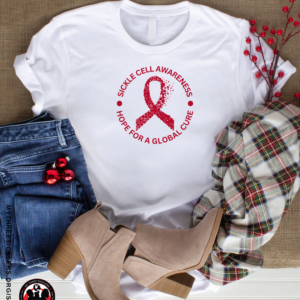ASH launched a clinical trials network designed to accelerate development of novel therapies for patients with sickle cell disease.
The network will match clinical trial sponsors with research sites, facilitate patient recruitment and provide consulting services. A core component will be a centralized data repository developed and maintained by ASH.
“We are on the brink of a new era in sickle cell disease research and treatment. Interest in this disease is expanding, with more than 40 treatments and more than a dozen devices in the research and development pipeline,” ASH President Alexis A. Thompson, MD, MPH, professor of pediatrics in the division of hematology, oncology and stem cell transplantation at Northwestern Medicine and associate director of equity and minority health at Ann and Robert H. Lurie Children’s Hospital of Chicago, said in a press release.
“However, enrollment and completion of clinical trials in sickle cell disease have historically been slow and costly,” Thompson added. “Establishing an organized network that will accelerate the completion of clinical research studies and bring new therapeutic options to patients more quickly is one of the most meaningful ways ASH can make a difference in the lives of people with this debilitating, chronic disease.”
HemOnc Today spoke with Chuck Chesson, PhD, director of the clinical trials network, about how this initiative came about, how it will be structured, who will be involved, and the potential impact it may have on development of new therapies and on outcomes for patients with sickle cell disease.
Question: What is the purpose of this trials network?
Answer: More than 40 treatments are for sickle cell disease are in development. There is a need for an organized system that can accelerate the completion of clinical trials to more quickly bring these therapies to [those who can benefit from them]. The network will implement processes and best practices to help pharmaceutical companies and research sites enroll participants in trials in a timely manner, and to improve the efficiency of other logistical tasks required for establishing clinical trials. In particular, the network will establish best practices for engaging potential trial participants in each community. Ultimately, our goal is to identify better treatments and cures for individuals with this disease. We need new agents, curative options such as gene therapy, and less toxic protocols related to transplantation.
Q: How did this initiative come about?
A: In 2015, ASH brought together sickle cell disease stakeholders for a summit to outline a path to advance key priority areas, including access to care, education and training, research, and global issues related to sickle cell disease. The No. 1 priority in research was the development of a clinical trials network. In 2016, we formed a task force to explore the feasibility of developing a network of clinical research sites for conducting trials, with the hope that it could encourage consensus within the field on the highest-priority research for the disease and result in more therapeutics. We asked other societies and networks, patients and physicians, and pharmaceutical companies what ASH could do to help move the needle. The ASH executive committee approved the clinical trials network in 2018. They hired me in June, and we started work in July.
Q: How will it be structured?
A: ASH will be the coordinating center — the hub. We see major academic medical centers being the majority of the research sites and perhaps having satellite sites that can reach further into the community. We will also establish local community advisory boards for each site that include patient representatives who will help us understand their concerns so we can be sure that our research addresses what local patients want. Four groups will be represented: parents of children with sickle cell disease, adolescents, young adults transitioning into adult care, and adults.
Q: Who will be involved?
A: Patients, clinical sites and industry. We are getting ready to conduct a tour around the country to speak with patient representatives to help us better understand their research priorities and the barriers to clinical trial participation. . Sites will also be involved, including researchers and clinicians. And, of course, we will have a lot of collaboration with industry and work very closely to understand their pipelines.
Q: What potential impact could it have on the development of new therapies and on outcomes?
A: We have the potential to give a sense of hope to the community that there are new treatments and they will have access to them. We will be a convener, bringing together patients and caregivers. Parents of small children with sickle cell disease are often making life-and-death decisions for patients who cannot speak for themselves. It is important for parents to have a voice in this.
Q: ASH is involved with another sickle cell initiative that just launched . How w ill it compl e ment the network?
A: We are a collaborator with the NHLBI on its new Cure Sickle Cell Initiative, a bold, visionary move to accelerate the study of curative gene therapies for sickle cell disease. The timing is right, because we have the technology to correct sickle cell disease on the molecular level. The first gene therapies for diseases (B-cell acute lymphoblastic leukemia and retinal dystrophy) were approved last year and everyone is excited and feeling more optimistic about these types of curative therapies. The Cure Sickle Cell Initiative will provide funding for researchers to conduct studies, and they have the potential to use our sites to conduct those studies.
Q: Is there anything else that you would like to mention?
A: Patients are important in all of this. We are trying to empower the community to participate with us so that they have a sense that we are doing this with them and for them.
by Jennifer Southall
For more information:
Chuck Chesson, PhD, can be reached at American Society of Hematology, 2021 L St. NW, Suite 900, Washington, DC 20036.
Disclosure: Chesson reports no relevant financial disclosures.









